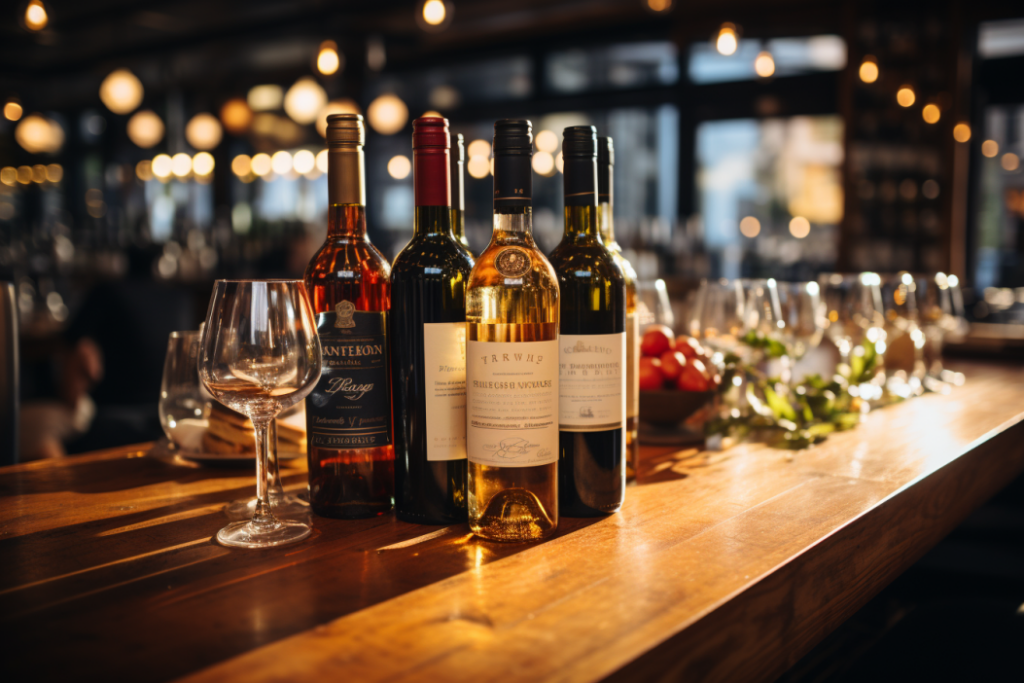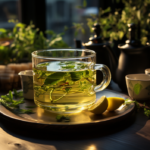Table of Contents
Explore the Flavor Profiles and Pairing Possibilities of the Top Wine Varietals
Are you a wine enthusiast looking to expand your knowledge and collection? You’re in the right place! In this article, we’re exploring the top wine varietals, their key characteristics, and how to best enjoy them. From bright and acidic whites to bold and tannic reds, we’ve covered all the tried-and-true favorites as well as some lesser-known gems. Whether you’re looking for a fruity Pinot Noir or a full-bodied Cabernet Sauvignon, we have you covered. Additionally, we’ll be taking a look at some food pairing options that will elevate your drinking experience to the next level. So grab your favorite bottle and let’s dive in!
Understanding Varietal Basics
Understanding the basics of varietals will give you a better appreciation of the different characteristics and nuances of wine. Here are some key things to know:
What is a Varietal?
Simply put, a varietal is a type of grape. It refers to a grape variety used in winemaking so a wine label will tell you which one or more types were used in its creation. For example, a bottle of Pinot Noir is made from the Pinot Noir grape.
Key Characteristics
Different varietals have different characteristics that affect the way a wine tastes. Here are some of the most important:
- Acidity: Acidity is critical in making wine because it balances sweetness and makes wine taste crisp and fresh. Wines made from grapes grown in cooler regions like Pinot Noir, Pinot Gris, and Sauvignon Blanc have higher acidity levels.
- Tannin: Tannin is a substance that comes from grape skins, seeds, and stems and is more prevalent in red wines. Tannin gives wine a texture and bitterness that can be described as astringent. It is what gives red wines like Cabernet Sauvignon, Merlot and Syrah their characteristic depth and structure.
- Body: A wine’s body refers to its weight and texture. Full-bodied wines feel heavier and have more viscosity in the mouth, while light-bodied wines feel thinner. Red wines like Zinfandel and Grenache are typically full-bodied, while white wines like Riesling and Pinot Gris are usually lighter.
- Aromas: Aroma is a major part of the flavor of a wine. Different varietals produce complex and nuanced aroma profiles. Cabernet Sauvignon, for example, has hints of blackcurrant and mint, while Chardonnay has aromas of lemon, pear, and vanilla.
Picking the Right Varietal
When choosing a varietal, the best rule of thumb is to find one that appeals to your personal preferences. One of the most important things to keep in mind is the food you will be pairing the wine with. Certain varietals pair better with certain foods. For example, a full-bodied red wine like Cabernet Sauvignon pairs well with red meat, while a light white wine like Pinot Grigio goes well with fish.
By understanding varietal basics, you can choose a wine with confidence and fully appreciate its unique characteristics.
Exploring Key Characteristics of Red Wines
Red wines are undoubtedly the most popular and widely consumed wine varietals. But what makes them so special? In this section, we’ll explore the key characteristics of red wines and what sets them apart from other varieties.
Bold Flavors and Tannins
Red wines generally have a more robust flavor profile than their white counterparts. They also tend to be higher in tannins, which are compounds found in the skins, seeds, and stems of grapes. Tannins give red wines their signature astringency and complexity, as well as their ability to stand up to rich and fatty foods.
Fruit and Spice Notes
While red wines are known for their boldness, they also have a wide range of fruit and spice notes that add depth and complexity to each sip. Some popular fruit flavors found in red wines include cherry, berry, and plum, while spice notes can range from black pepper to clove to vanilla.
Body and Finish
Red wines can vary in body, or the weight and texture of the wine as it feels in your mouth. Light-bodied red wines, like Pinot Noir, tend to be fruitier and easier to drink, while full-bodied reds, like Cabernet Sauvignon, have a more intense flavor profile and heavier mouthfeel. Additionally, the finish of a red wine, or the taste that lingers in your mouth after each sip, can range from short and clean to long and complex.
Food Pairings
Red wines are notoriously food-friendly and pair well with a wide variety of cuisines. Light-bodied reds like Beaujolais are perfect for serving with salmon or other delicate fish, while fuller-bodied reds like Syrah or Zinfandel are excellent with grilled meats or hearty stews. Additionally, the tannins in red wine make them a great match for rich and salty foods like cheese or dark chocolate.
Red wines are beloved for their bold flavors, tannins, fruit and spice notes, body, and finish. Understanding the specific characteristics of each red wine can help you better appreciate and enjoy the wide range of varieties available. And of course, experimenting with different food pairings can lead to a truly unforgettable drinking experience.
Discovering Flavor Profiles of White Wines
When it comes to white wines, there are an incredible variety of options to choose from. Each type of white wine has a unique flavor profile, ranging from crisp and acidic to sweet and fruity. Here are some of the most popular white wine varietals and their distinctive characteristics:
- Sauvignon Blanc: Vibrant and herbaceous, this wine is characterized by its high acidity and notes of tropical fruit and grass.
- Chardonnay: This popular wine is known for its rich, buttery flavor and aroma. With notes of vanilla and oak, it provides drinkers with a full-bodied and indulgent experience.
- Pinot Grigio: An Italian favorite, Pinot Grigio has a light, refreshing flavor with notes of lemon and green apple. It’s an easy-to-drink wine that pairs perfectly with seafood dishes.
- Riesling: This white wine is known for its sweet, floral aroma and fruity flavor. It ranges from dry to sweet, offering a wide variety of flavor options for any wine enthusiast.
- Moscato: A sweet white wine with a fruit-forward flavor and low acidity, Moscato is perfect for sipping on its own or as a complement to desserts.
Pairing White Wines with Food
White wines often pair well with lighter dishes such as seafood, poultry, and salads. Sauvignon blanc, for example, pairs well with sushi or grilled chicken, while Chardonnay can be paired with grilled shrimp or lobster. One should be careful when pairing sweeter white wines such as Moscato with food since their strong sweetness can clash with some dishes.
Serving and Storing
White wines are recommended to be served at a cooler temperature, usually between 45-50 degrees Fahrenheit. Since white wines are more delicate in flavor than red wines, they are recommended to be kept in the refrigerator or a cool, dry place away from sunlight. Once opened, they can last up to 3-4 days in the refrigerator. However, it’s always best to finish the bottle within the day.
White wines offer a range of flavors from dry to sweet and everything in between. Varietals such as Sauvignon Blanc, Chardonnay, Pinot Grigio, Riesling, and Moscato all possess unique flavor characteristics and offer delicious pairing possibilities. When serving or storing white wines, it’s important to keep them cool and away from sunlight to maintain their delicate flavors.
Food Pairing Possibilities of Popular Wine Varietals
Wine is not only a drink to accompany a meal, but a flavor enhancer that can elevate your dining experience. Whether you’re enjoying a glass at home or attending a fancy dinner party, knowing which wine varietals marry well with certain foods is a must. In this section, we’ll guide you through various wine and food pairing suggestions for the most popular varietals out there.
Cabernet Sauvignon
Cabernet Sauvignon, a bold red wine with high tannins, pairs well with grilled meats, like steak, lamb, and venison. This wine’s acidity helps to cut through the fat and enhance the flavors in the food.
Chardonnay
For this rich white wine, creamy dishes, like Alfredo pasta, match well with the fat content and buttery flavors. Alternatively, spicy or tangy dishes like chicken piccata create a flavorful contrast.
Pinot Noir
The lightly acidic Pinot Noir is a versatile wine that goes well with a wide array of meals. A classic pairing includes salmon, with the wine serving as a good complement to the fish oils.
Sauvignon Blanc
This green and herbaceous varietal pairs beautifully with tangy and light meals like pesto pasta and caprese salad. It’s also an excellent pairing for fresh seafood and citrus flavors.
Merlot
Merlot is a soft and fruity wine with moderate tannins, making it a good accompaniment for red sauced pasta or glazed ham. It also matches well with cheese, especially gouda, brie, and camembert.
Pairing food and wine may seem like a complicated process, but it’s easy and can create a memorable dining experience. The most important thing to keep in mind is that it’s all subjective, and what works best for you is most important. Step out of your comfort zone, experiment with different pairings, and try out new wine varietals to see what you like the most.
Conclusion
In conclusion, with the top wine varietals and their characteristics now on your radar, you can confidently navigate your way through the wine aisle or restaurant menu with ease. Remember, while the basic characteristics may be the same, there is still enormous variation from bottle to bottle. So, take some time to experiment with different vintages and producers to find your perfect match. Whether you enjoy sipping on a bold red in front of the fireplace or savoring a crisp white on a sunny day, there is a varietal out there that will suit your preferences. Cheers!









